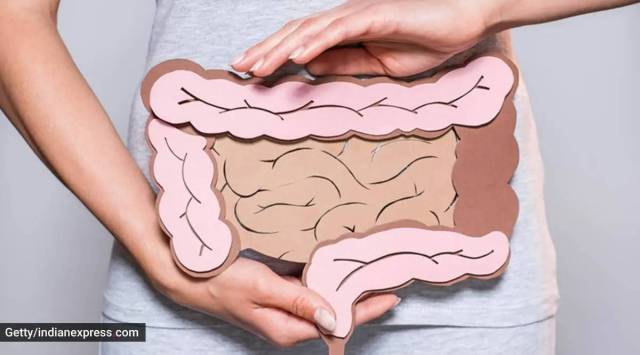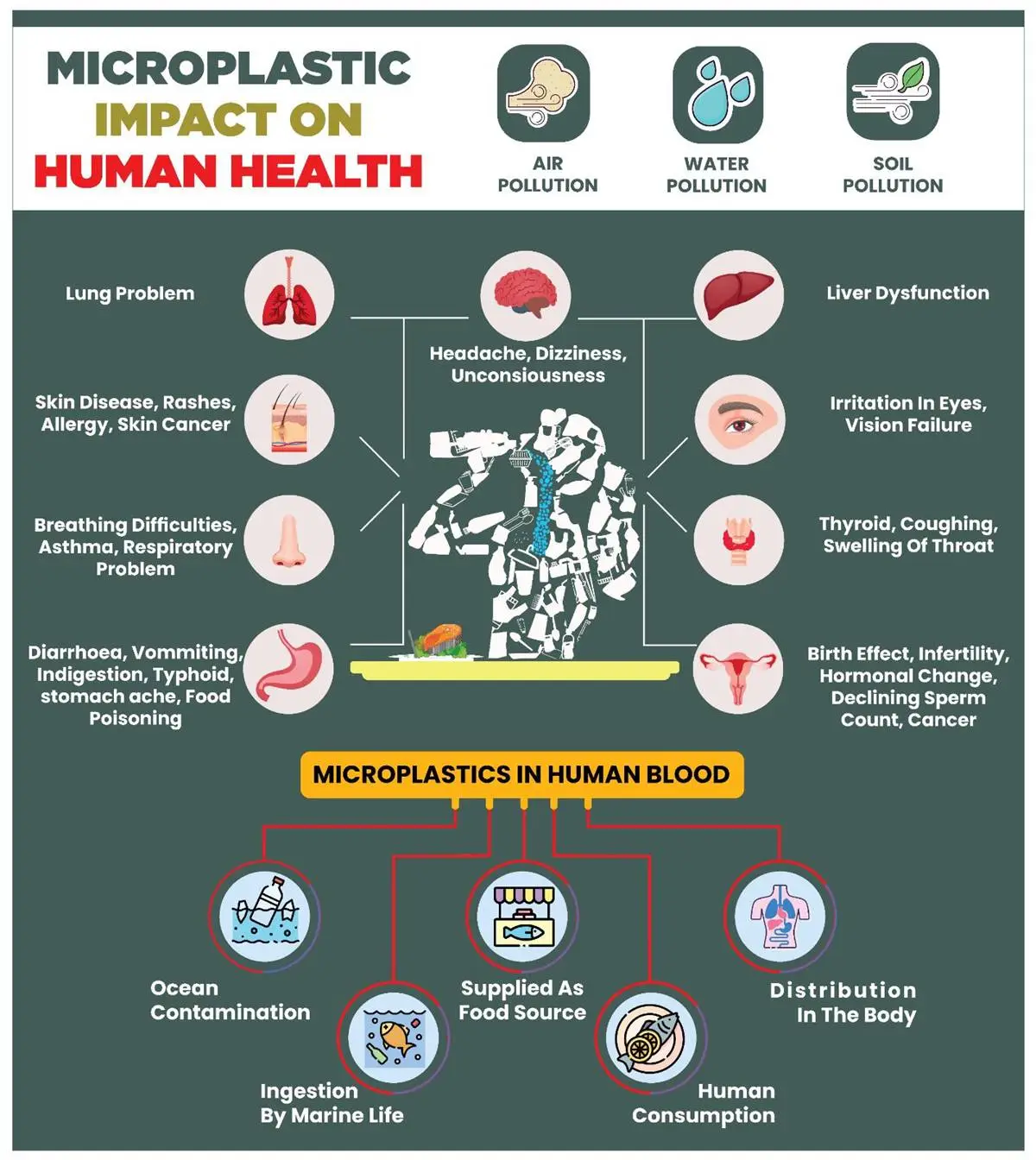How microplastics in foods and beverages affect gut health
From the deepest parts of the ocean to the lungs, microplastics appear to have infiltrated every aspect of our existence, warns Prof Ravindra Khaiwal
 Microplastic impairs the gut microbiome, leading to an imbalance of gut bacteria essential for the human body called gut dysbiosis. (Photo: Getty Images/Thinkstock)
Microplastic impairs the gut microbiome, leading to an imbalance of gut bacteria essential for the human body called gut dysbiosis. (Photo: Getty Images/Thinkstock) Microplastic (MP) accumulation is ubiquitous in the natural environment and has attracted significant attention from researchers. These are extremely minute plastic particulates (<5mm) that enter the environment from both primary and secondary sources. Microplastic debris is a pervasive, long-lasting pollutant that is highly resistant to environmental degradation and readily adheres to hydrophobic persistent organic pollutants.
According to the most recent global estimate of microplastics, there are between 51 trillion microplastic particles drifting on the surface of the ocean. A human consumes at least 50,000 microplastic particles annually due to contamination of the food chain, potable water, and air. The widespread increase of MPs in the natural environment and food chain is a result of the continuous and rapid expansion of synthetic plastic production, mismanagement, and improper fragmentation of plastic waste. Concerning the contamination of air, water soil with microplastics, the ecological and health risks associated with microplastic exposure are of great concern.
Prevalence of MPs in human foods
The prevalence of MPs has been detected in foods, beverages (bottled water, beer, honey, salt, etc.), and in air samples, and exposure to MPs through ingestion or inhalation may have a negative effect on human health. The presence of microplastics in human-edible marine species as well as seafood (such as fish and shellfish) raises concerns about the potential health impacts of microplastics. MPs are also associated with morbidity and mortality in various marine and aquatic organisms. The deleterious human health effects of microplastics can be due to the toxicity of associated chemicals or because of particle toxicity.
The major toxic chemical additives present in microplastics that are of great concern for human health include Bisphenol A (BPA), phthalates, triclosan, Brominated Flame Retardants (BFR), bisphenone and organotins.
The biggest health risk associated is with the chemical BPA, which is used to harden the plastic and subsequently leaches into the food. BPA has been detected in concentrations ranging from 5 to 284 g/kg microplastics, and it is estimated that shellfish consumers consume up to 11,000 microplastic particles annually, as per studies. BPA can contaminate food and drinks and cause alterations in liver function, insulin resistance, fetal development in pregnant women, reproductive system and brain function.
 The major toxic chemical additives present in microplastics that are of great concern for human health include Bisphenol A (BPA), phthalates, triclosan, Brominated Flame Retardants (BFR), bisphenone and organotins.
The major toxic chemical additives present in microplastics that are of great concern for human health include Bisphenol A (BPA), phthalates, triclosan, Brominated Flame Retardants (BFR), bisphenone and organotins.
Some visible effects of microplastics on human health
Microplastics in Human Blood: In 2022, Prof. Dick Vethaak, an ecotoxicologist, Vrije Universiteit Amsterdam, Netherlands examined blood samples from 22 healthy adult donors, and discovered plastic particles in 17 of them. One-third of the samples contained polystyrene, which is used to package food and other products, while one-half of the samples contained PET plastic, which is commonly used in beverage vessels. A quarter of the blood samples contained polyethylene; the material used to manufacture plastic carrier bags.
Accumulation of microplastics in human placenta: In 2021, a study analysed the presence of microplastics in pregnant women by Raman microspectroscopy in Italy and found MPs in all placental portions, including maternal, amniochorial, and fetal membranes.
Effect of microplastic on gut health: MP impairs the gut microbiome, leading to an imbalance of gut bacteria essential for the human body called gut dysbiosis. The other negative human health effects of micro-plastic include the onset of obesity, cancer, DNA damage, oxidative stress, neurotoxicity, cardiovascular disease as well as numerous reproductive and developmental outcomes. Apart from this, laboratory tests have shown that microplastics cause damage to human cells, including allergic reactions, cell death, cell damage, and the induction of inflammatory and immune responses. In-vitro studies have shown that translocation of microplastics from the gastrointestinal cavity to the lymph and circulatory systems, results in systemic exposure and accumulation in tissues such as the brain, kidney, and liver. MPs can cross the epithelial barrier of the lungs and intestines, gastrointestinal tract, and placenta with special uptake profiles.
From the deepest parts of the ocean to the lungs, microplastics appear to have infiltrated every aspect of our existence. MPs are difficult to remove from the environment, as they are frequently too small to detect or grasp in moving water and can remain active contaminants for up to 450 years. The human health effects of MPs are challenging and hard to understand and the risk posed is quite difficult to assess and remains controversial. Therefore, the scientific and public discourse has increasingly centered on the human health implications of microplastic exposure. There is an immediate need for researchers to develop a new standardized methodology to analyse and determine the potential health risk of micro- and nano-scale plastics.
Many countries have implemented or are planning to establish regulations to minimize the MPs in the environment. Recently, a Global Plastics Treaty at the UN Environment Assembly (UNEA-5) in Nairobi to, ‘End Plastic Pollution’, and forge an international legally binding agreement by 2024, the most significant first international environmental laws in world history. In May 2023, more than 160 countries, including India, joined hands to be the part of treaty and eliminate plastic pollution for the protection of the ocean, human health and climate. The key to resolving the plastics crisis and fostering transformational change requires exceptional collaboration and collective action by forming regional partnerships, making effective strategies and engaging community at grassroot level.
(The author is Professor, Department of Community Medicine and School of Public Health, Post Graduate Institute of Medical Education and Research (PGIMER), Chandigarh)



- 0112 hours ago
- 022 hours ago
- 0312 hours ago
- 0412 hours ago
- 052 hours ago




























